Beautiful dresses
Fashion and costume of the second half of the 19th century
In the 1870s and 1880s, positivism was in vogue. The positivism style in European art of the second half of the 19th century extended only to decorative and applied art.
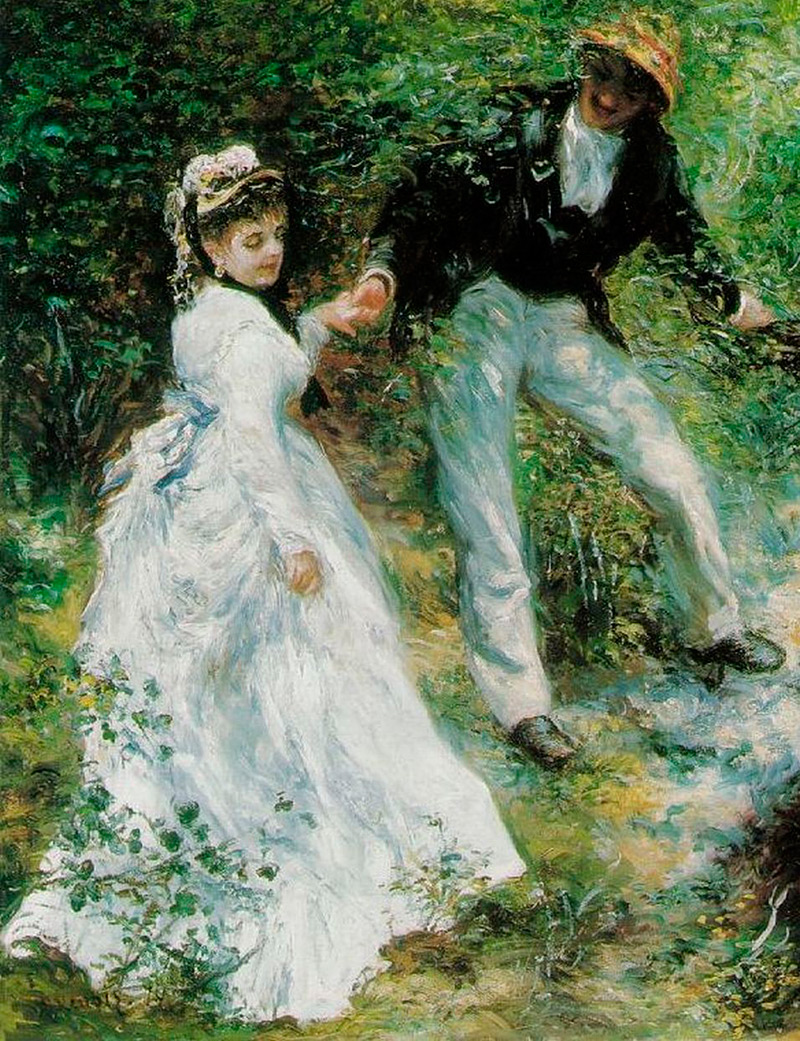
Pierre-Auguste Renoir
"Walk" 1870
Positivism, as opposed to classicism, or baroque, was not "great" or "great style." That is, unlike the "great styles", the same classicism, it did not apply to all types of art in general, but was applicable only to certain types of art. So, the style of positivism in the 1870-1880s was inherent in European costume, while realism prevailed in painting and impressionism was born.

Pierre-Auguste Renoir
"In the garden" 1888
Like all 19th century styles, positivism was most evident in women's clothing. While the men's suit remained virtually unchanged.
In the men's fashion of the second half of the 19th century, a three-piece suit was finally established: trousers, a vest and a jacket. After 1875, frock coats and tailcoats were practically not worn as everyday clothes. Multi-colored tailcoats are no longer found. Now the tailcoat is black evening wear.
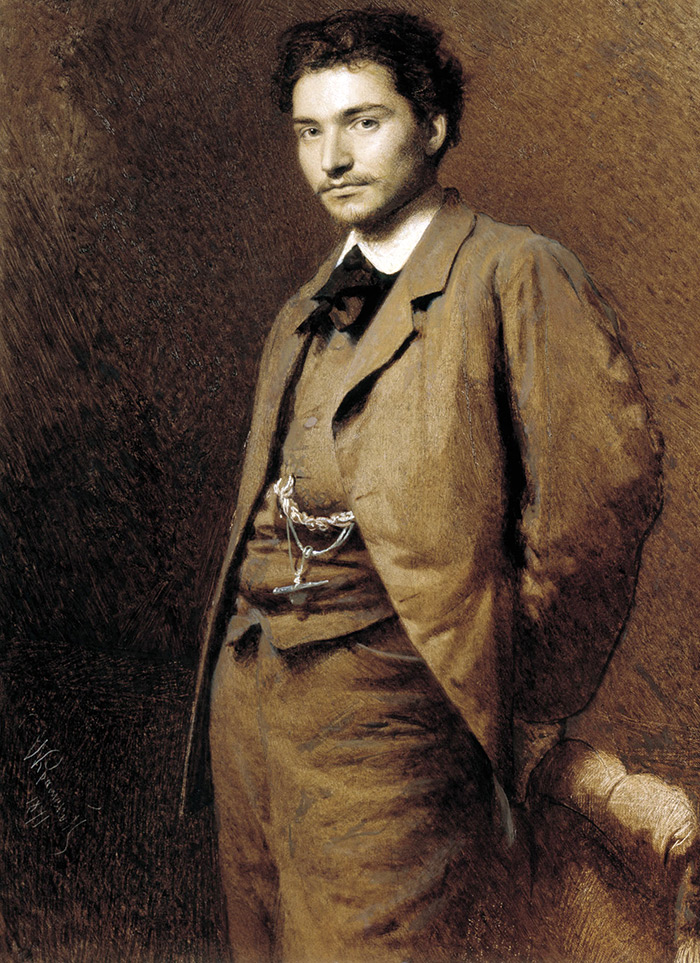
Ivan Kramskoy
"Portrait of the artist F.A. Vasiliev" 1871
At the same time, as for the three-piece suit itself, the vest, trousers and jacket are now sewn from materials of the same type and are most often monochromatic.
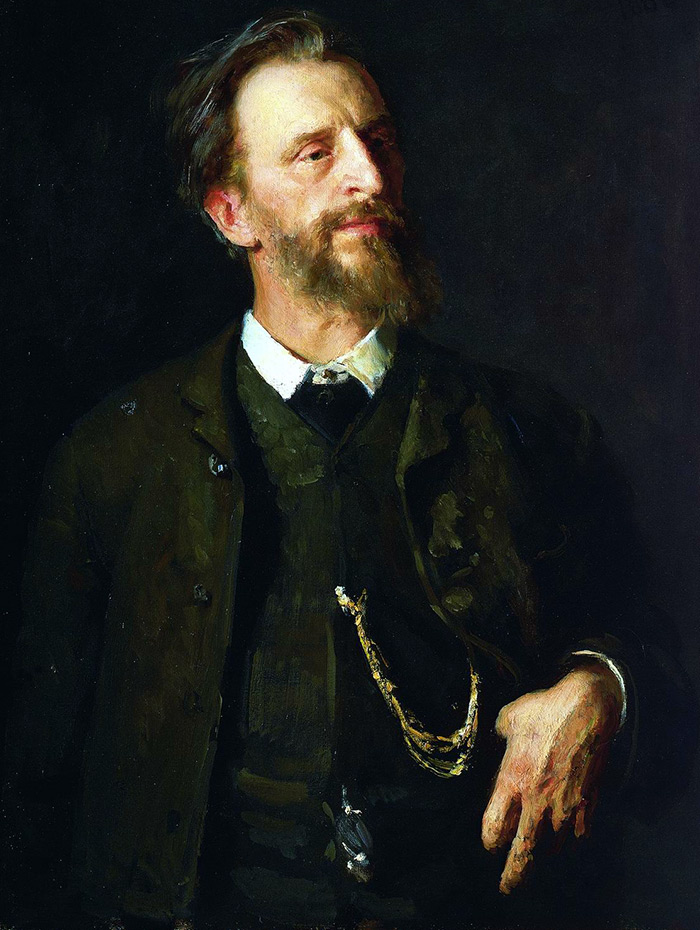
Ilya Repin
"Portrait of the artist G.G. Myasoedov" 1884
Top hat hats are also a thing of the past. Now they are only worn at the opera. In everyday clothes, a more modest headdress - a bowler hat - comes into vogue.

Ilya Repin
"Portrait of Tretyakov" 1883
Portrait of that same Tretyakov - industrialist and patron of the arts,
founder of the Tretyakov Gallery
But in the female suit, the positivism style came into its full rights from the 1870s of the XIX century. And thus changed the style second rococo.
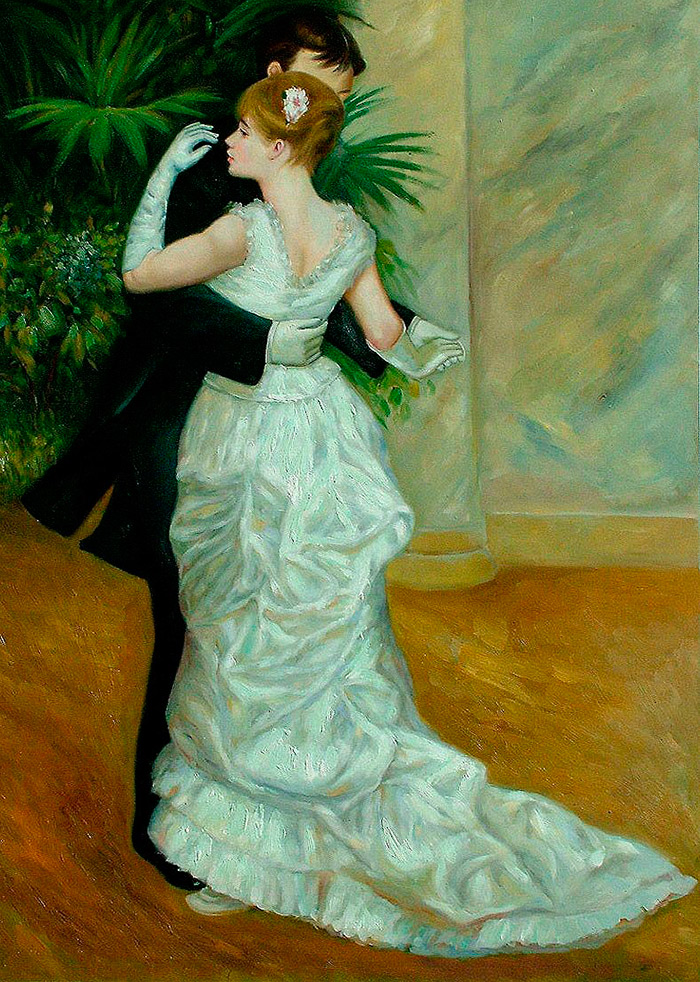
Pierre-Auguste Renoir
"Dance in the City" 1883
It all started with crinolines - skirts for second rococo dresses. The frames were so wide that women could not walk normally. Because they simply did not see where they were stepping, because of the splendor of the skirts. And the skirts began to gradually taper in front, while the entire frame structure shifted back.

Pierre-Auguste Renoir
"Dance at Bougival" 1883
As a result, by the 1870s, the skirts of women's dresses acquired a very strange look - straight in the front and bulging in the back. The silhouette of a woman's dress has become similar to the Latin letter S. S-shaped dresses will eventually become the main feature of the positivism style in a woman's suit.

Pierre-Auguste Renoir
"Dance in the Country" 1883
There is a version that the famous fashion designer of the second half of the 19th century, Charles Worth, also had a hand in the appearance of dresses with bustles (this was the name of the frame under the skirt of dresses in the style of positivism). According to legend, he saw a servant who, crossing a puddle, lifted the skirt of her dress on the sides, which formed the basis of dresses with bustles.
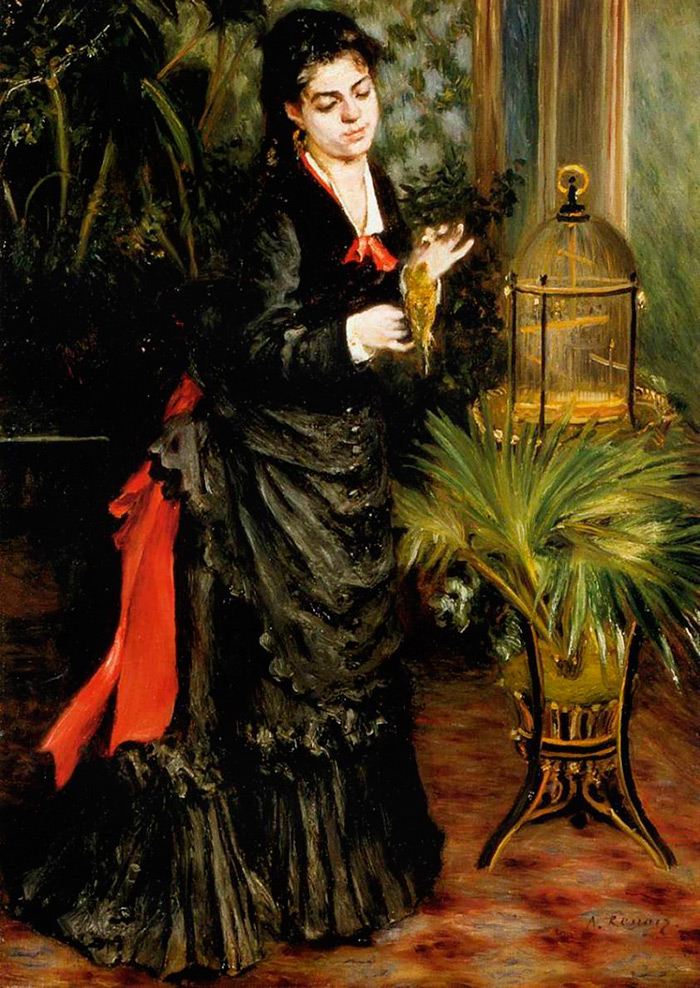
Pierre-Auguste Renoir
"Woman with a Parrot" 1871
Such dresses were called “tunic” dresses with a bustle. A bustle is a wire frame, or a wicker frame like a basket, or a pillow that was attached under the dress below the waist to make the figure splendid.
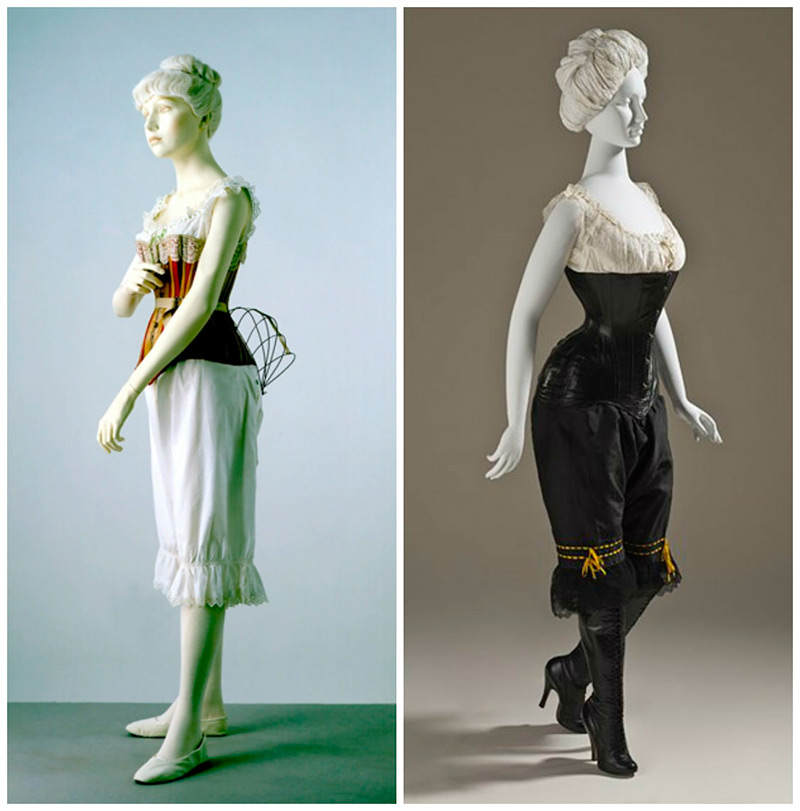
Lingerie set 1880
The bodice of the tunic dress was smooth and tight. Straight sleeves. In the everyday version, the dress had a stand-up collar. Positivist ball gowns could have a horizontal neckline and a small train. The skirt of the dress is straight and with a trench. Tren most often draped on the bustle and looked like draped or folded with bow folds on the back of the dress. Below the tren, the fabric of the skirt of the dress was laid in folds and could be fastened with a braid from the wrong side.
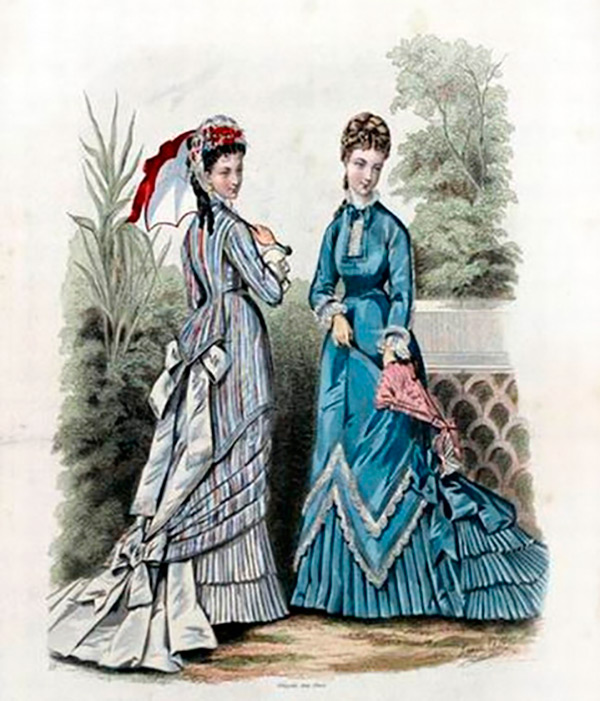
Illustration from a fashion magazine of the second half of the 19th century [/ i]
In addition to the “tunic” dress, women could also wear a tailor suit, which came into European fashion from England. Such a costume was worn by female riders, as well as women who fought for equality. It was at the end of the 19th century that the first emancipated women appeared, and the very concept of feminism. The French writer Georges Sand served as an example for many women of the 19th century who fought for equality with men, including in clothing.
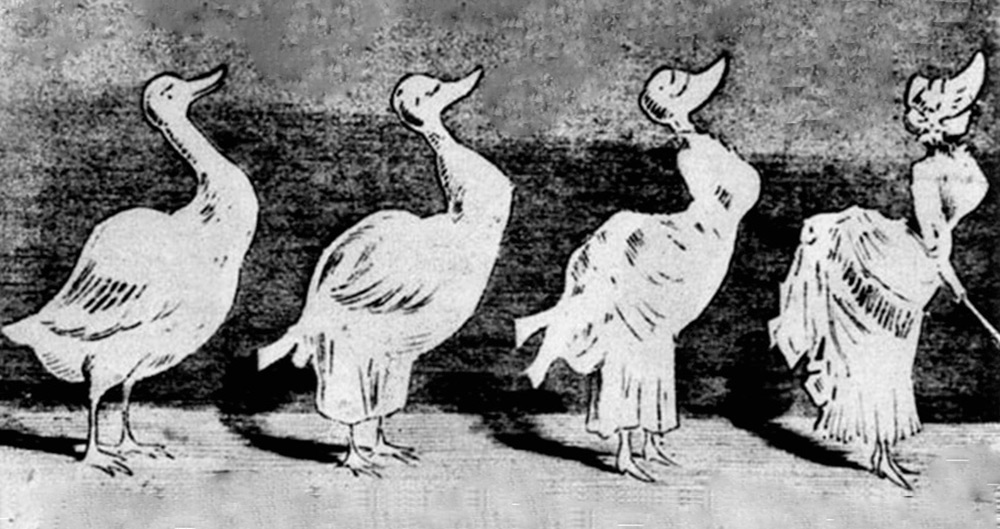
"Tunic" could not pass by the fashion for "strange" dresses
19th century cartoonists
One of the positivism style fashion cartoons
Ulk magazine Berlin 1883
The taller suit was somewhat reminiscent of a men's three-piece suit. It consisted of a skirt, blouse and jacket. Also, with such a suit, women could wear starched collars and cuffs borrowed from men's fashion. Especially daring ladies used men's ties as an accessory.
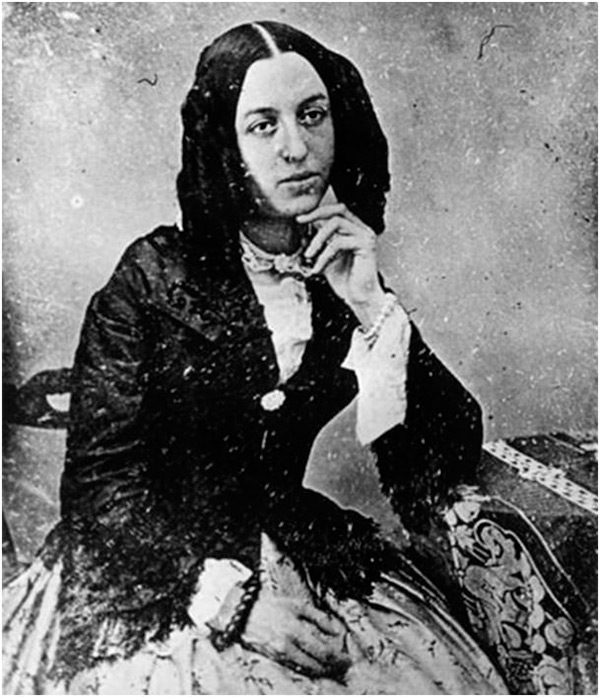
Photography by Georges Sand
The real name of one of the most famous writers of the 19th century Amandine Aurora Lucille Dupin
She took a male pseudonym due to the fact that under the female name of her book not a single publisher wanted to print, considering it deliberately frivolous
Another interesting dress of the positivism style was a taffeta dress, the sleeves and neckline of which were decorated with ruffles. And the bottom of the skirt is trimmed with fringe. The frills of such a dress, when walking, produced a rustle, which at that time was considered very fashionable and was called such a rustle "frou-frou". The dress itself was sometimes called "vocalise", that is, sonorous.
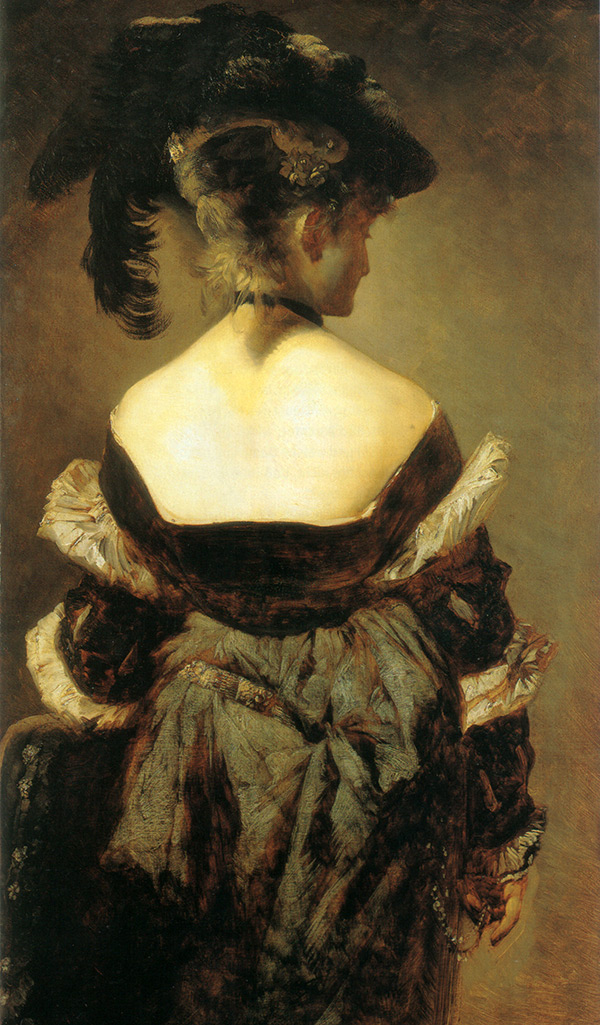
Hans Makart - Austrian artist and trendsetter
In the 1870s, his workshop was the center of Austrian fashion life.
"Female portrait"
Various types of home clothes were also widespread - robes with kimono sleeves, negligees, hoods - wide cut outerwear.
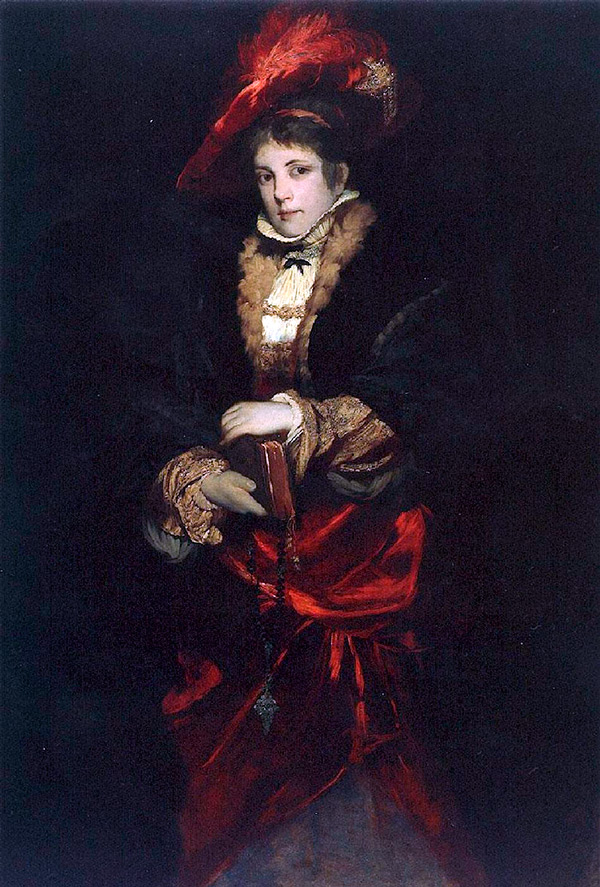
Hans Makart
"Portrait of a Lady in a Red Hat with Feathers"
Various hats were worn with positivist dresses. Most often small in size. Since the hairstyles of that time gradually became quite high, by the twentieth century, women's hats began to take the form of tattoos, which were decorated with flowers, feathers and even very small stuffed birds.
As jewelry, women from the upper strata of society wore lacy sun umbrellas, gloves made of fine fabric, small handbags with a long cord, and long strands of beads.
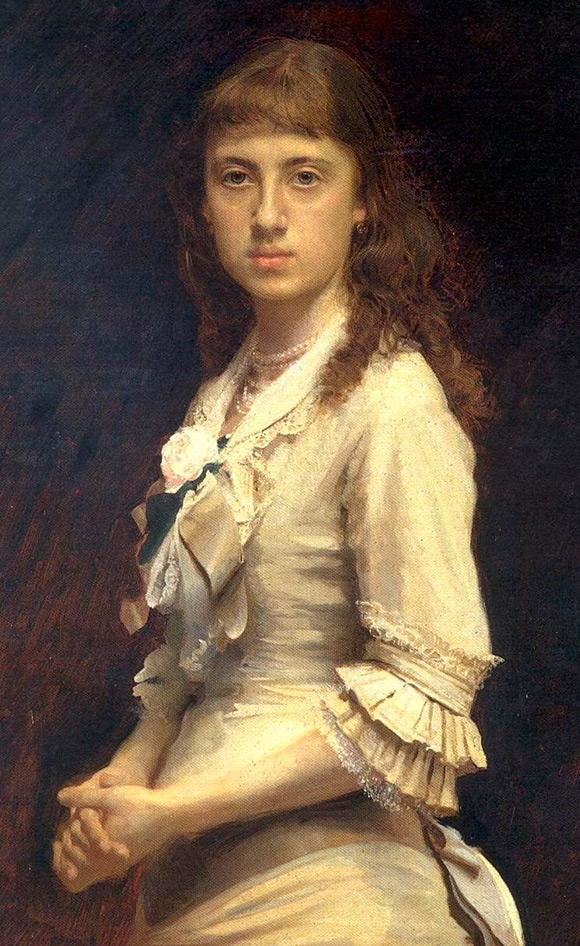
Ivan Kramskoy
"Portrait of Sophia Kramskoy" 1882
Positivist style dresses were mainly made from fabrics such as velvet and wool. Initially, the colors of the dresses were dark, but then light-colored dresses come into fashion.
Comments and Reviews
Add a comment
Similar materials
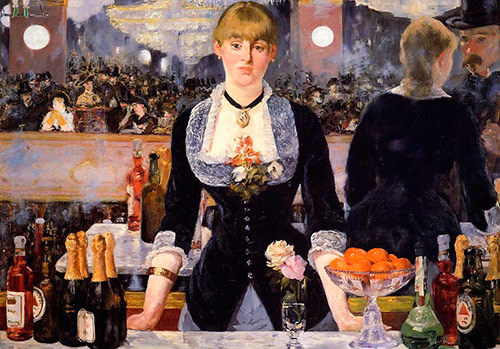 Fashion and style of the 1880s - the history of the costume
Fashion and style of the 1880s - the history of the costume
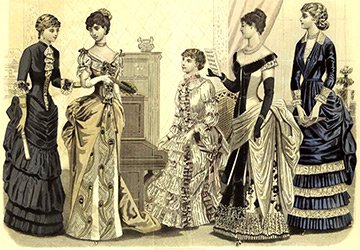 Dresses of the second half of the 19th century
Dresses of the second half of the 19th century
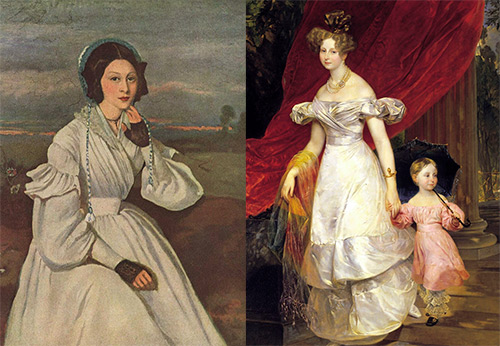 Fashion history and costume during the Romantic period
Fashion history and costume during the Romantic period
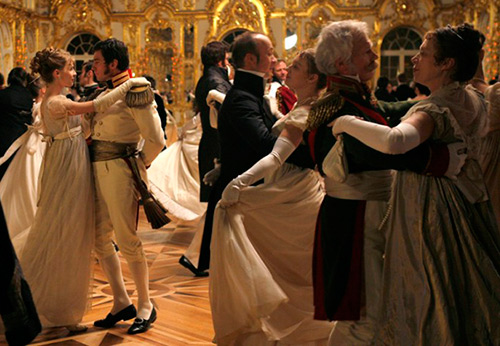 Empire style in 19th century clothing and Empire style dresses
Empire style in 19th century clothing and Empire style dresses
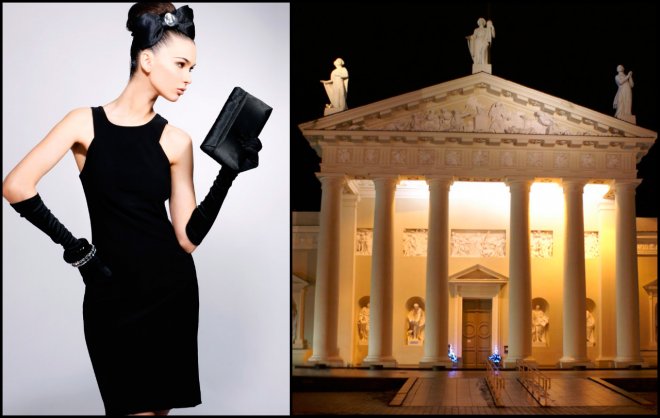 Classicism style in history and modern clothing
Classicism style in history and modern clothing
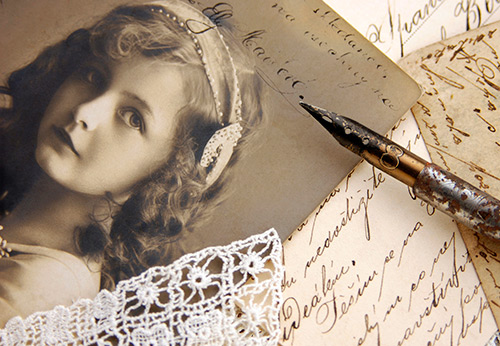 Beautiful girls in vintage photos
Beautiful girls in vintage photos
Rating news
Shades of clothing that make women look younger
What shades of hair make women younger: rules and photos
Funny wedding dresses - photos and ideas
12 most expensive down jackets for the winter
How to look 25 at 40: tips from supermodels
Beautiful schoolgirls
Anti-aging haircuts and hairstyles for women
Fashionable skirts for autumn and winter
Fashionable women's trousers for the cold season
Fashionable and stylish sandals for summer 2024
Spring-summer 2024
 Fashionable dresses and tops with thin spaghetti straps
Fashionable dresses and tops with thin spaghetti straps
 Bandana tops: how to wear stylishly and beautifully
Bandana tops: how to wear stylishly and beautifully
 How to put together the perfect men's wardrobe for the summer
How to put together the perfect men's wardrobe for the summer
 Fashionable shorts for spring-summer 2024
Fashionable shorts for spring-summer 2024
 Fashionable skirts for spring-summer 2024: a guide to online shopping
Fashionable skirts for spring-summer 2024: a guide to online shopping
 The most fashionable dresses spring-summer 2024: styles and colors
The most fashionable dresses spring-summer 2024: styles and colors
 Fashionable total look 2024: ideas of images and trends
Fashionable total look 2024: ideas of images and trends